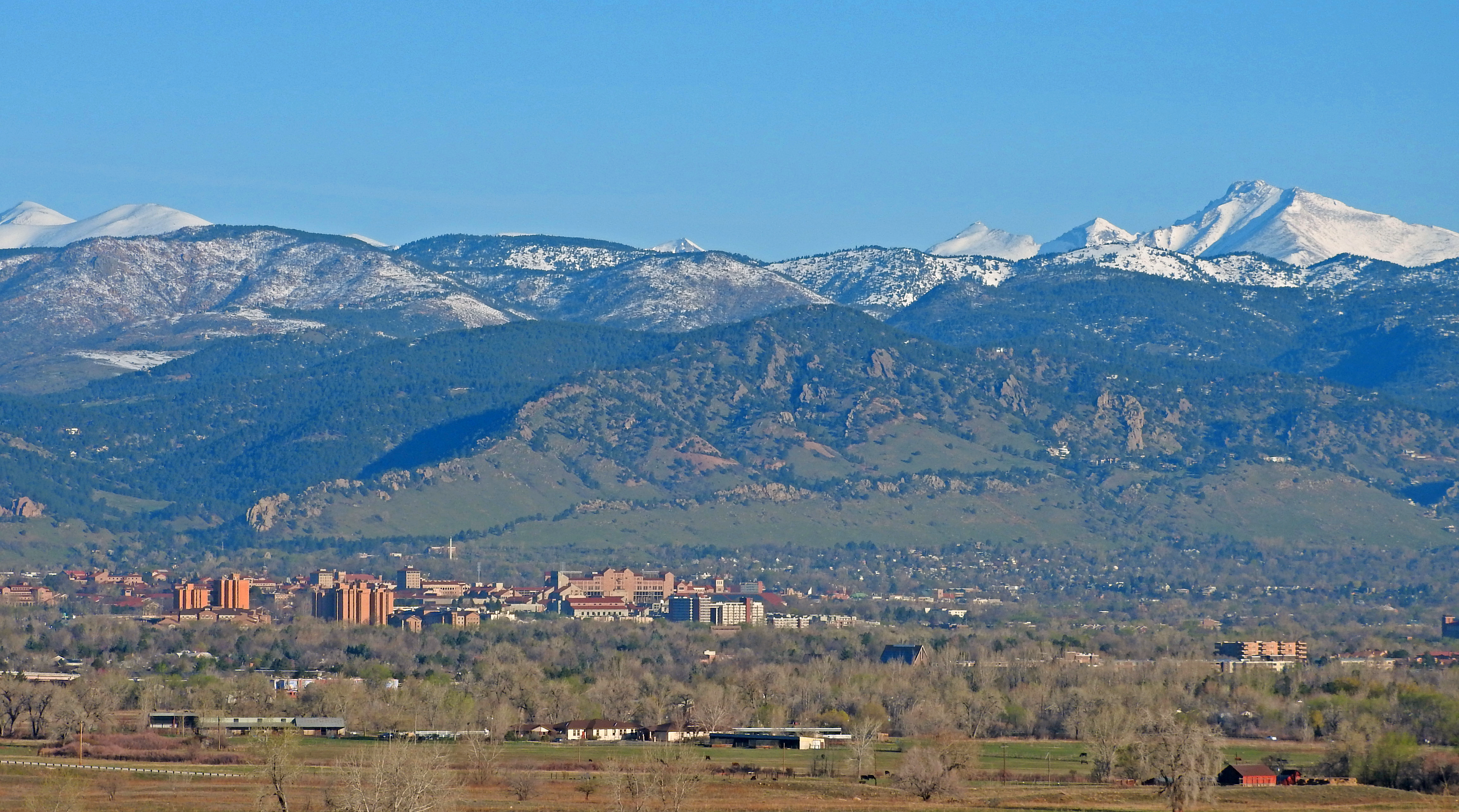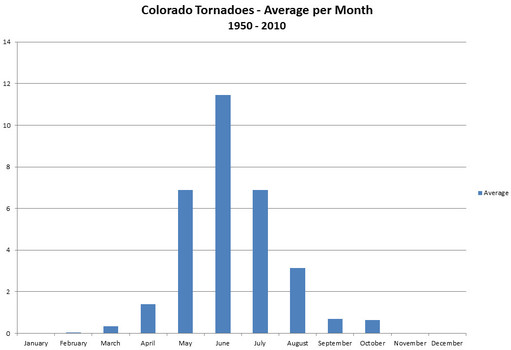As April comes to a close, we are now fully entrenched in the Spring season here in the Front Range. We take a look at trends in climatology and offer our predictions for the month of May in Boulder.
This content is available exclusively to BoulderCAST Premium members until May 1, 2016.
Spring is an interesting time east of the Rockies. A combination of favorable storm tracks, cool Canadian air, and Gulf of Mexico moisture makes the weather in March, April, and May somewhat of a grab bag (how about that snow storm last week?)
In springtime, the winter storm track is still over the region and moisture becomes widespread enough to produce semi-frequent, significant precipitation in Boulder. This combination makes this the wettest time of the year. In fact, May is Boulder’s wettest month, just beating out April with 3.05″ on average.
The window for measurable snow in Boulder slams shut very rapidly toward the latter half of April, but May snow is not uncommon. In fact, May snowfall has been recorded 14 out of the last 17 years, so don’t put those shovels away just yet! March and April this year did not disappoint, with well above normal snow totals. Luckily for those of you jaded of the winter season, with warmer air slowly regaining its grasp on Colorado, the bulk of May precipitation generally falls as the liquid variety.
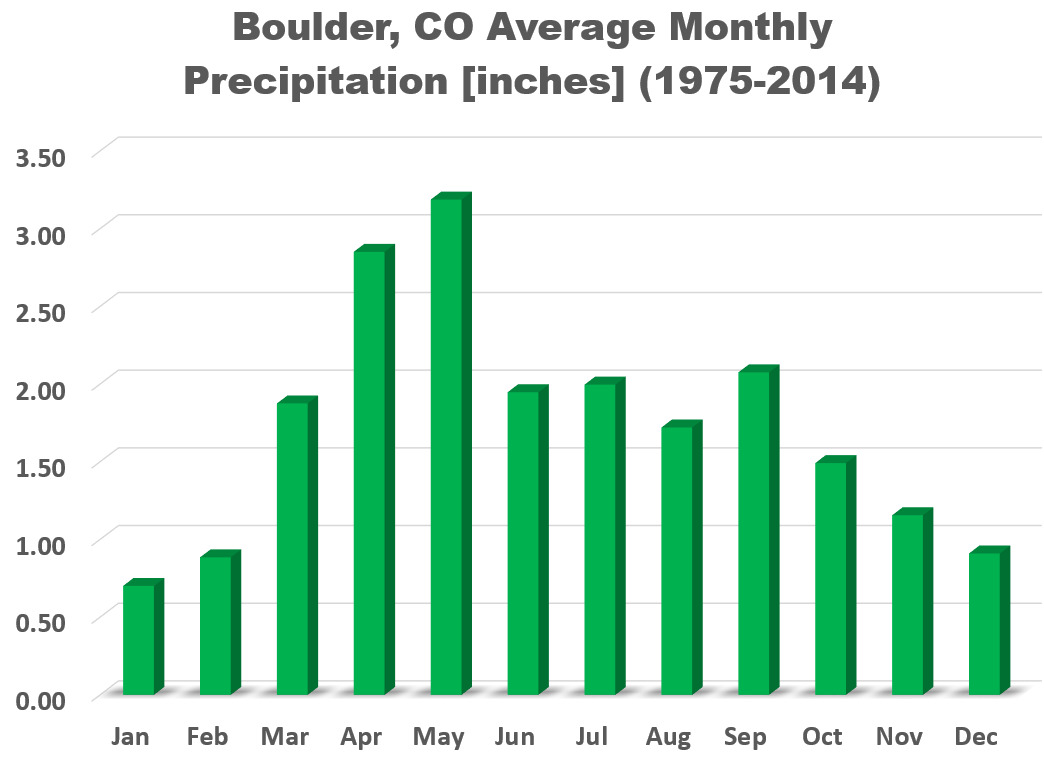
Monthly mean precipitation and standard deviations for Boulder. May is the wettest month of them all!
May also sees temperatures trending upward. The average high/low on May 1st is 65/39 degrees. By May 31st, it is 73/48 degrees. The hottest May day occurred on May 29, 2003 at 95 degrees, while the coldest temperature measured in May occurred on the 2nd in 2013 at 17 degrees. The takeaway: May in Boulder can feel like July……or January, depending on the mood of Mother Nature at the time!
May also typically marks the official beginning of the growing season, as the mean and median date of the last frost occur in the first few days of May (see below).
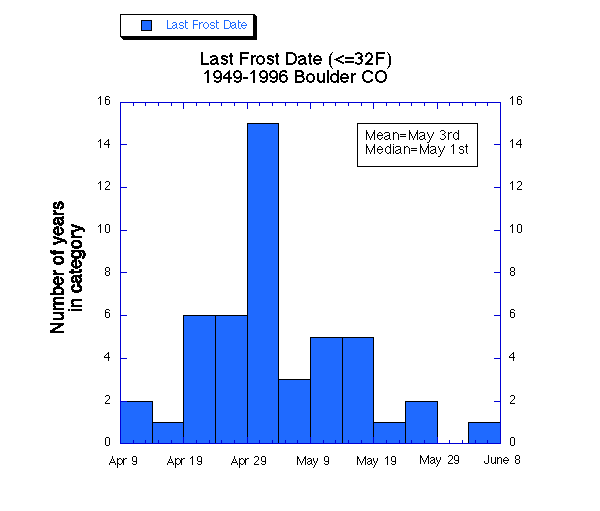
Occurrence of the last 32 degree temperature by date for Boulder. On average, the last frost is May 3rd. Unbelievably, the latest frost on record occurred on June 3rd. Fun fact: The latest measurable snowfall in Boulder occurred on June 5th, 2010.
In addition, May brings a profound jump in severe weather nationwide, including Colorado. However, Boulder County is protected from the bulk of severe weather due to it’s close proximity to the mountains; therefore, we are mostly immune to this trend, with only 1 out of the 9 confirmed tornadoes in Boulder County since 1950 having occurred in the fifth month of the year.
Outlook for May 2016
May 2015 was Boulder’s wettest and coldest in 20 years, with nearly 8 inches of precipitation falling and a mean temperature 8 degrees below normal. While surpassing these marks are unlikely, the long-range guidance of the CFS model suggests we may well see above normal precipitation and below normal temperatures again this year.
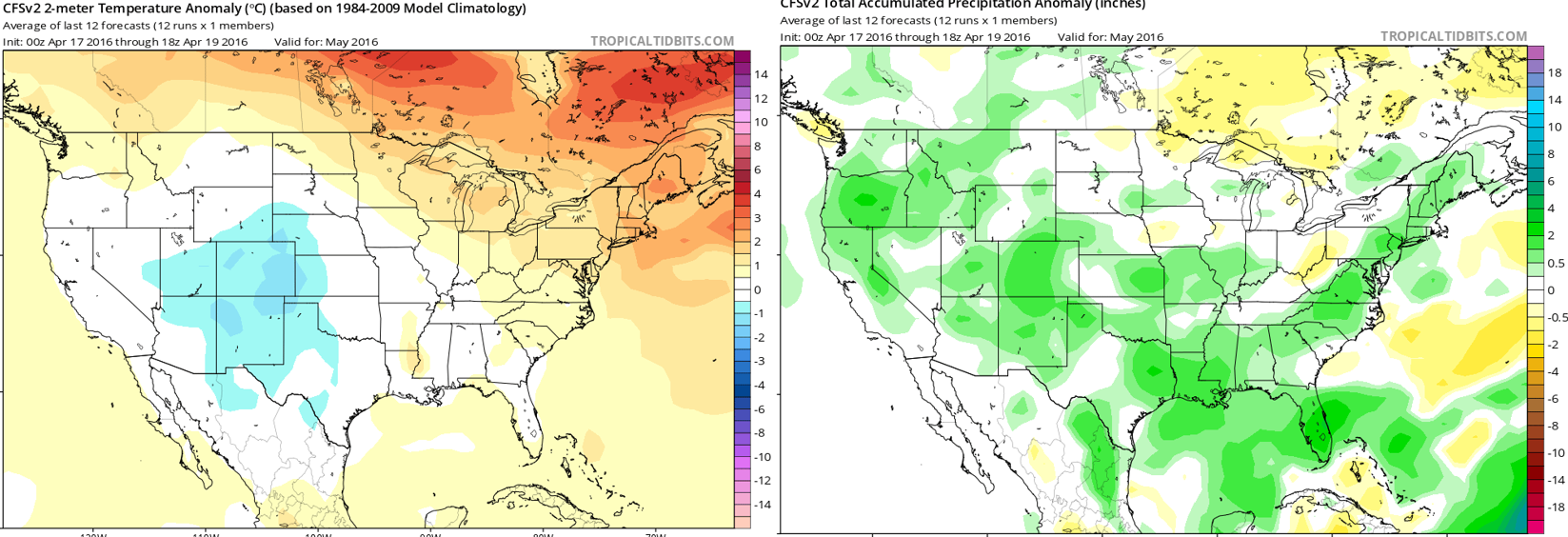
CFSv2 model outlook for the month of May. Temperature anomaly is to the left, while precipitation anomaly is to the right.
One way we can extrapolate past weather patterns towards predicting future weather is through analogs. Using this technique, we compare recent weather data (from the last few months) to the historical record. Based on our analysis, Boulder’s best analog years for 2016 (heading into May) are 2010, 2000, 2003, 1995, and 1994. Based on the top ten analogs, there is no insight into May 2016’s temperature. However, Boulder’s analogs suggest a drier than normal month of May (80% chance).
Blending all these outcomes, we are predicting below normal temperatures and near normal precipitation for the month of May in Boulder.
The NOAA Climate Prediction Center has the same inclination as the CFS model. The outlook maps below are very similar to the ones above, don’t you think?
In summary:
May in Boulder can have you shoveling snow one day and turning on your car’s air conditioning the next. Historical climatology says May should be quite wet and to even expect a few snowflakes. This year, we think that May will be cooler than average with near normal precipitation.
With our snow pack currently right in-line with normal levels, continued precipitation will help to ensure we avoid another wildfire season like 2012. The map below confirms we are right on track to do just that, with parts of the Front Range recording double their normal precipitation during the month of April.
There is also growing speculation that a La Niña will develop through the summer and into Winter 2016-17 (which is generally correlated with decreased precipitation for the Front Range), but we digress. By July (JJA time period below), there is only an 8% chance that our current El Niño will still be intact (red bar).
That is a topic for another post. Be sure to check back later!

